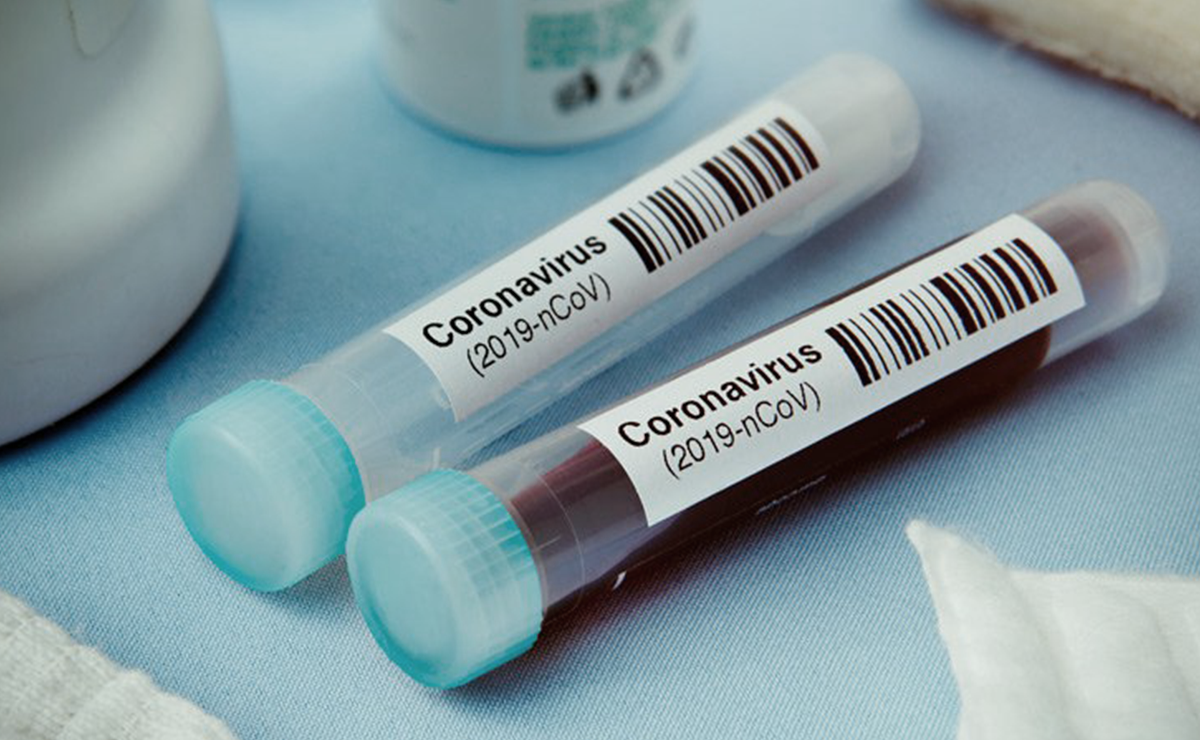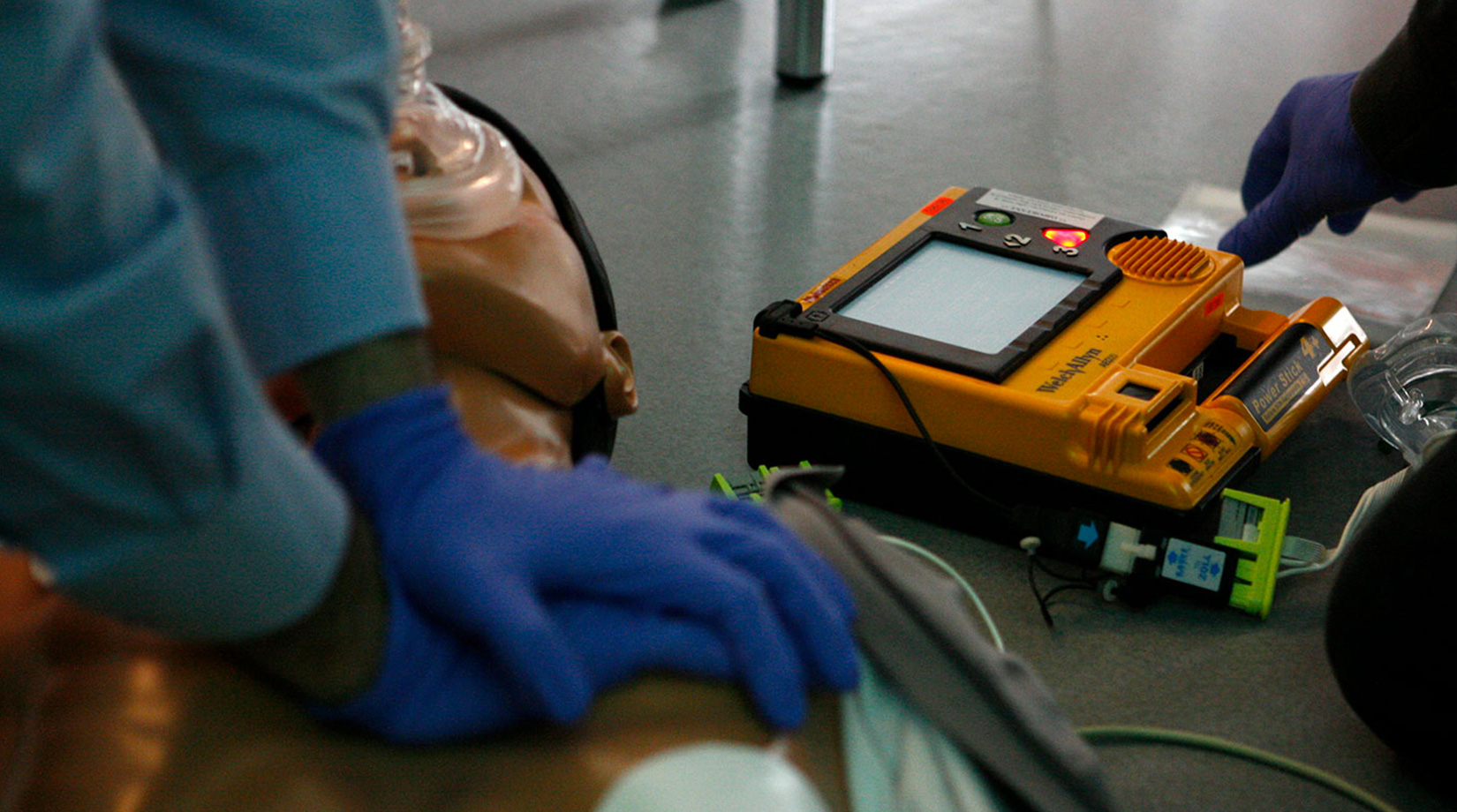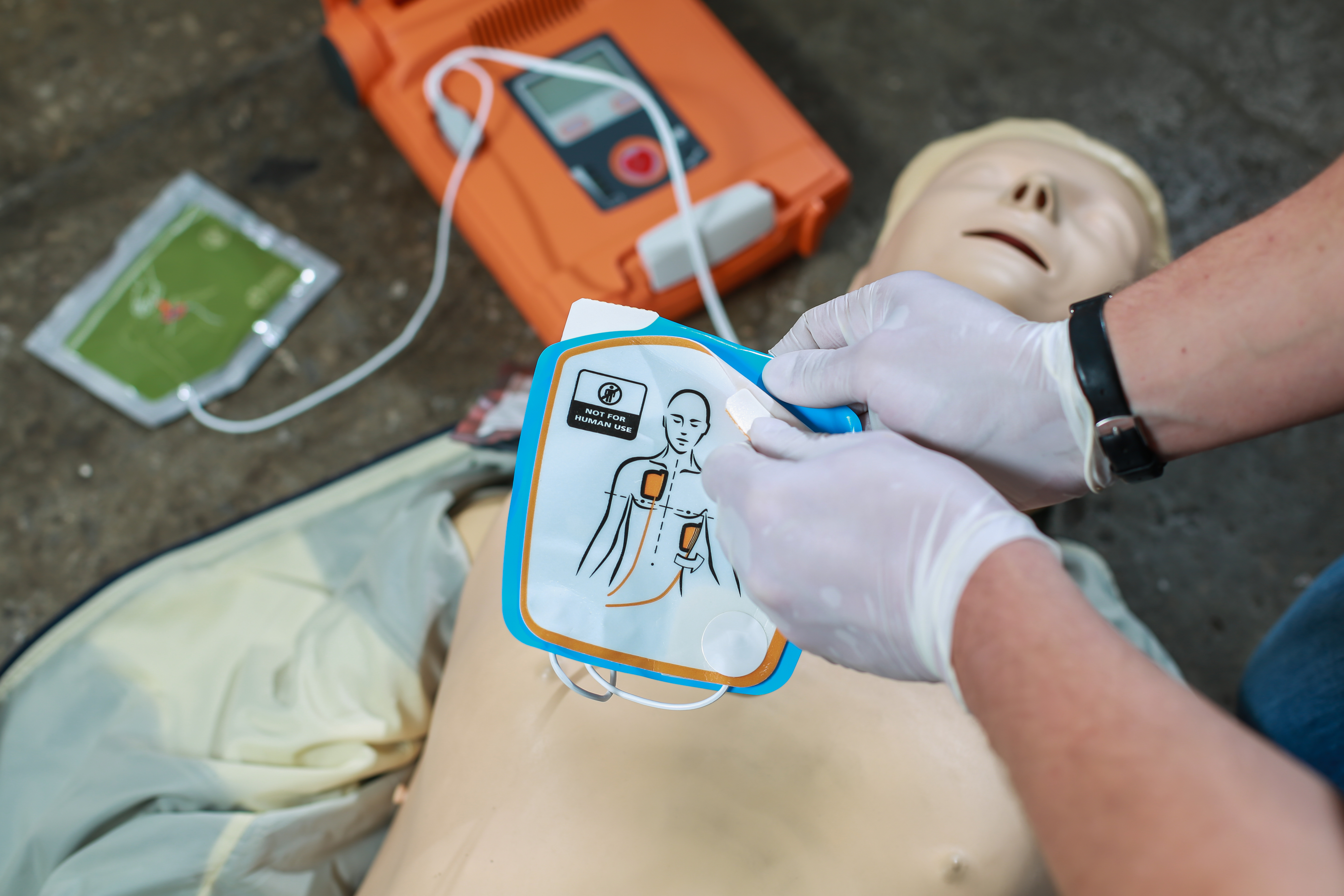
Clinical Context
The world continues to respond to the recent outbreak of respiratory disease caused by a novel coronavirus that was first detected in Wuhan City, Hubei Province, China. Novel coronavirus 2019 (COVID-19) spread rapidly from Wuhan City to all of mainland China in approximately 1 month. Rapid growth there has apparently slowed, but outbreaks have since occurred in South Korea, Japan, Iran, and Italy, as well as small numbers of cases appearing in many other countries. Although the World Health Organization (WHO) has not yet deemed the outbreak a pandemic, it emphasized that this could change at any time, and the Centers for Disease Control and Prevention (CDC) has warned that it is only a matter of time before COVID-19 occurs throughout US communities, mandating preparation and implementation of prevention and containment strategies by schools, businesses, and organizations.
In a recent press conference, after the first reported US death in Washington State on Feb. 29, Anthony S. Fauci, MD, director of the National Institute of Allergy and Infectious Diseases, indicated 75% - 80% of patients infected with COVID-19 will have mild illness and recover according to the current pattern of disease, while 15%-20% will require advanced medical care. He stated that, the more serious cases would likely occur in those who are elderly or have underlying medical conditions.
Currently, COVID-19 appears to be highly infectious, but only a small percentage of cases develop severe illness, and the case fatality rate (CFR) overall appears to be less than 3%. It is therefore important to identify characteristics of those most vulnerable to complications and death as a way of combating the virus. The largest case series to date of COVID-19 was recently published by the Chinese Center for Disease Control and Prevention, including >72,314 cases in mainland China as of February 11, 2020. A viewpoint published in JAMA summarizes the main findings and highlights emerging understanding of and lessons from the COVID-19 epidemic.
Study Synopsis and Perspective
As of March 1st, COVID-19 has infected 87,137 people and has caused almost 2977 deaths worldwide according to the WHO.
Although the vast majority of these infections and deaths have been in China, there are now pockets of infection in Iran, Italy, Japan, and South Korea, as well as handfuls of cases in many other countries, including the United States. The WHO stopped short of calling the outbreak a pandemic, but stressed that the status could change at any time.
Although COVID-19 appears to be highly transmissible, only a small percentage of people seems to develop severe illness, and an even smaller number die from the infection. However, statistics to date suggest worse prognosis with COVID-19 infection among people with diabetes and cardiovascular disease (CVD).
In a recent study published in JAMA, Zunyou Wu, MD, PhD, and Jennifer M. McGoogan, PhD, studied 44,672 confirmed COVID-19 cases that had been reported through February 11, 2020, and were analyzed by the Chinese Centers for Disease Control and Prevention. Results from the study show that 80.9% of people in China who have been diagnosed with COVID-19 have had mild illness.
Of 72,314 patients from the Chinese Centers for Disease Control and Prevention case series, 44,672 (62%) were confirmed to be COVID-19 according to a positive viral nucleic acid test result on throat swab samples. Of these, 81% were classified as mild (ie, no pneumonia or mild pneumonia) and 14% as severe, having symptoms such as dyspnea, respiratory frequency of at least 30 breaths per minutes, blood oxygen saturation of 93% or lower, partial pressure of arterial oxygen to fraction of inspired oxygen ratio lower than 300, and/or lung infiltrates higher than 50% within 24 to 48 hours). Five percent of these cases were classified as critical, with symptoms such as respiratory failure, septic shock, and/or multiple organ dysfunction or failure.
There were 1023 deaths reported, for an overall CFR of 2.3%. A majority of those deaths occurred in patients classified as critical (49.0%), followed by 14.8% in those aged 80 years and older and 8.0% in those aged 70 to 79 years. There were no deaths reported in those aged 9 years or younger.
Death rate was elevated among those with preexisting comorbid conditions: 10.5% for CVD, 7.3% for diabetes, 6.3% for chronic respiratory disease, 6.0% for hypertension, and 5.6% for cancer.
What these results tell us is that is that a CFR in China of 2.3% is less than that for previous coronavirus outbreaks caused by severe acute respiratory syndrome (SARS; CFR, 9.6%) and Middle East respiratory syndrome (MERS; CFR: 34.4%). Keep in mind that case fatality rates vary by factors such as age, sex, underlying medical conditions, and geography. Outside Hubei province in China, the epicenter of the outbreak, the CFR may be as low as 0.4% compared with 2.9% within the province.
That said, because COVID-19 has infected far more people than SARS or MERS, the newest coronavirus on the block has already claimed many more lives than its predecessors.
This then raises the question: Who is most at risk for severe illness and death from COVID-19?
Case Fatality Rate for Diabetes Is High, but Interpretation Is Tricky
Evidence suggests that diabetes may increase risk for infection from COVID-19 by 2- to 3-fold, independent of other medical problems such as CVD.
According to the JAMA study, COVID-19 has led to more total deaths because of the large number of cases compared with SARS and MERS. In a previous study by Chen et al, which looked at 99 confirmed patients with COVID-19 infections, 51% had chronic conditions, including CVD and cerebrovascular diseases (40%).[2] Average patient age in this study was 55.5 years, with two thirds of participants being men.
Before publication of the JAMA study, 2 relatively small case series of patients who had been hospitalized for COVID-19 in Wuhan also suggested that older men with underlying medical problems, especially CVD and diabetes, are more likely to develop severe illness from the virus.[3]
However, experts caution that for COVID-19 and similar infections, several factors may skew the data, making interpretation tricky. These findings suggest that increased mortality resulting from the COVID-19 infections is likely to occur in older people with comorbid conditions, similar to the influenza and other infectious diseases.
"Cases that are identified tend to be in patients that have more severe illness, compared to younger, healthier individuals who just stay home and don't seek medical care," said Preeti N. Malani, MD, an infectious disease specialist and chief health officer at the University of Michigan Medical School, Ann Arbor. She further pointed out: "This is also the case with individuals who are sick enough to be hospitalized. There are more people with more chronic conditions, including diabetes [among hospitalized individuals].
"In general, diabetes can be a marker of other chronic health conditions like heart disease, as well as obesity, which might contribute to the increased risk of infection," Dr Malani added. "Diabetes is also much more common with age and will continue to be a marker of poor outcomes for [all of] these reasons," she said.
"The message we want to emphasize is that emergencies unmask vulnerabilities in diabetes. The old and the sick are the most vulnerable," Juliana C. N. Chan, MD, told Medscape Medical News in an interview.
Dr Chan is director of the Hong Kong Institute of Diabetes and Obesity at the Chinese University of Hong Kong.
Dr Chan and other experts are therefore calling for patients with diabetes, those with CVD, and patients with other chronic medical conditions to be extra vigilant in their efforts to avoid contact with the virus, although they also noted that individual responses will vary greatly. In past infectious disease outbreaks, including SARS and H1N1 influenza, people with diabetes were at increased risk for severe illness and death.
"I don't think it's an overstatement to say that people with diabetes...are at higher risk of developing COVID-19 because the data are suggestive," noted Dr Chan, although she cautioned that longer-term research will give a much clearer picture.
Poor Control of Diabetes a Risk Factor for Infection
Dr Chan was a senior coauthor on a study published last month in Diabetologia, as reported by Medscape Medical News, that found that mortality rates among people with diabetes in Hong Kong have plummeted in recent years, with the exception of young people, who may be more likely to have poorly controlled diabetes.[4]
Importantly, within the context of the COVID-19 outbreak, although deaths from most conditions such as CVD and cancer decreased among people with diabetes in that study, deaths from pneumonia among people with diabetes remained about the same.
In serious cases of infection, the COVID-19 virus invades the cells that line the respiratory tract and lungs and enters the mucus, causing pneumonia. Severe lung damage from pneumonia can result in acute respiratory distress syndrome, which in turn can cause septic shock.
Note that acute respiratory distress syndrome and septic shock are the main causes of death from COVID-19.
So far, according to WHO’s March 1st situation report, Hong Kong has had only 95 confirmed cases of COVID-19, although the first Hong Kong resident to die from the virus was a 39-year-old man with diabetes. That death was soon followed by a second death: a 70-year-old man with diabetes and other medical problems, including high blood pressure and kidney disease.
"Our message is to ask people with diabetes to do things early in order to protect themselves and reduce their risk of having problems if anything happens," Dr Chan emphasized to Medscape Medical News.
Although the mechanism of this increased susceptibility remains unclear, research suggests that high blood glucose levels may lead to reduced functioning of the immune system.
Each Person With Diabetes Is Different; Use Common Sense
All of this makes it tricky to tease out diabetes' individual contribution to infection risk.
"The proportion in which each medical condition contributes to [an individual's] risk of infection is hard to dissect out," explained Andrea Luk, MBChB, FHKCP, FHKAM.
Dr Luk is an associate professor at the Chinese University of Hong Kong and is the other senior coauthor of the study published in Diabetologia.[5]
"Certainly a person with both diabetes and [CVD] would have more risk than someone with diabetes and good glucose control and without any other comorbidities," she continued.
But because every person with diabetes is different, it is important to consider the whole package, she stressed.
Whether someone with diabetes succumbs to infection has a lot to do with glycemic control, diabetes duration, and diabetes-related comorbid conditions, such as heart disease, kidney disease, and stroke, as well as their age, their weight, and whether they smoke.
Dr Chan further clarified: "We have to judge this case by case. You cannot apply it across the board to all people with diabetes. A person with well-controlled diabetes is very different from someone with poorly controlled diabetes. They have a different set of risk factors and complications."
While awaiting a more detailed analysis, Dr Chan, Dr Luk, and Dr Malani all suggest common sense measures for patients with diabetes, CVD, and other chronic conditions: staying up to date with vaccinations, avoiding large crowds, frequent hand washing, avoiding touching eyes or mouth (the so-called T-zone), and wearing face masks in areas where COVID-19 is prevalent.
People with symptoms should also wear a facemask to avoid spreading infection to others.
"People with diabetes or other chronic conditions should be extra vigilant about protecting themselves from infection," Dr Luk reiterated. They should also have a lower threshold for seeking care if they feel they are developing symptoms of infection, she noted.
With all we know, it is safe to say that for non-critically ill patients, close follow-up is likely to be sufficient to manage the disease. However, aggressive treatments and intensive care are needed for critically ill patients with cofounding risk factors for CVD and diabetes.
Indications so far are that there is a worse prognosis for people with diabetes and other chronic medical conditions, such as CVD, if they become infected with COVID-19.
Statistics suggest that those who are the most vulnerable (ie, the elderly, people with comorbid conditions such as uncontrolled diabetes and CVD) can have a worse prognosis. More detailed analysis is needed, however, to show a clear connection between the two.
Dr Chan, Dr Luk, and Dr Malani have disclosed no relevant financial relationships.
JAMA. Published online February 24, 2020.
Study Highlights
- A summary from the Chinese Center for Disease Control and Prevention of 72,314 COVID-19 cases in mainland China as of February 11, 2020, included 44,672 confirmed cases (62%), 16,186 suspected cases (22%), 10,567 diagnosed cases (15%), and 889 asymptomatic cases (1%).
- Three quarters of cases were diagnosed in Hubei Province (75%), and 86% reported living in or having visited Wuhan or having close contact with a Wuhan resident or visitor.
- Age distribution among the 44,672 confirmed cases was from 30 to 79 years in 87%, 20 to 29 years in 8%, at least 80 years in 3%, 10 to 19 years in 1%, and younger than 10 years in 1%.
- Among 44,415 confirmed cases with available information regarding disease severity, 81% were mild (no or mild pneumonia), 14% were severe, and 5% were critical (respiratory failure, septic shock, and/or multiple organ dysfunction or failure).
- Severe cases were defined as those with dyspnea, respiratory frequency 30 or more breaths per minute, blood oxygen saturation of 93% or less, partial pressure of arterial oxygen to fraction of inspired oxygen ratio lower than 300, and/or lung infiltrates above 50% within 24 to 48 hours.
- Among 44,672 confirmed cases, CFR was 2.3% overall (1023 deaths), 49.0% in critical cases, 14.8% in patients aged at least 80 years, and 8.0% in patients aged 70 to 79 years.
- Older age and preexisting comorbid conditions were associated with higher CFR: 10.5% for CVD, 7.3% for diabetes, 6.3% for chronic respiratory disease, 6.0% for hypertension, and 5.6% for cancer.
- Experts interviewed by Medscape Medical News noted that diabetes is associated with double or triple the risk for infection from COVID-19, independent of CVD or other medical comorbidities.
- Infected healthcare personnel accounted for 3.8% of confirmed cases overall (5 deaths), 63% of cases in Wuhan, and 14.8% of severe or critical cases
- The rapid spread of COVID-19 from the city of Wuhan to the entire country of China in just 30 days, reflecting both geographical expansion and sudden increase in case numbers, surprised and quickly overwhelmed Chinese health and public health services, especially in Wuhan City and Hubei Province.
- Epidemic curves suggest a mixed outbreak pattern, with early cases possibly reflecting zoonotic spillover at Huanan Seafood Wholesale Market or other continuous common sources, and later cases indicating a propagated source via person-to-person transmission.
- The JAMA article describes changes in the Chinese government epidemic response protocol after the SARS outbreak in 2002 to 2003: Although 300 SARS cases and 5 deaths had occurred before the Chinese government reported the outbreak to WHO, just 27 COVID-19 cases and no deaths had occurred before reporting to WHO.
- Given the lack of treatment and prevention options specific for COVID-19, such as targeted antiviral agents and vaccines, China's public health outbreak response strategies included isolation, quarantine, social distancing, and community containment (eg, by restricting travel, canceling gatherings, and prohibiting attendance at businesses and schools).
- The article concluded that preexisting comorbid conditions, particularly CVD and diabetes, and advanced age are associated with higher CFR.
- COVID-19 infection appears to be most severe among these most vulnerable groups, especially those with long-duration, poorly controlled diabetes, although further research is needed.
- Factors complicating interpretation of these associations include a higher case-identification rate in more severe cases and in hospitalized cases, higher prevalence of chronic conditions among hospitalized patients, and associations of diabetes with advancing age and with other chronic health conditions that also predispose to higher risk for infection.
- However, people with diabetes were at greater risk for severe illness and death in previous outbreaks of SARS, H1N1 influenza, and other infectious diseases, and hyperglycemia may contribute to impaired immune system functioning.
- Patients with diabetes, especially those with CVD or poor glycemic control, and those with other chronic medical conditions or risk factors should be particularly vigilant to avoid exposure to COVID-19 and other infections, and to have a lower threshold for medical attention if they develop symptoms of infection.
- Patients with diabetes should aim for optimal glucose control.
- Preventive strategies for patients with chronic comorbidities include following the recommended immunization schedule; avoiding large crowds; practicing good hand hygiene; avoiding touching the eyes, nose or mouth; and wearing face masks if exposure to COVID-19 is likely.
- Symptomatic individuals should also wear a face mask to avoid spreading infection to others.
- Everyone should follow travel advisories, which currently include avoiding nonessential travel to China.
- The JAMA article notes that a crucial objective is to buy enough time for scientific research before COVID-19 infection becomes too widespread.
- Although some containment measures implemented by the Chinese government might be viewed as extreme, the investigators concluded that the overall benefits and lives saved outweigh potential infringement of civil liberties.
- The article stresses the need for cooperation among countries in potential pandemics, as disease pathogens do not respect geopolitical borders.
- Specifically, WHO data (https://www.who.int/docs/default-source/coronaviruse/situation-reports/20200225-sitrep-36-covid-19.pdf) as of February 25 indicate 4 new countries (Afghanistan, Bahrain, Iraq, and Oman) reporting cases of COVID-19 in the last 24 hours, as well as 80,239 cases confirmed globally (908 new), 77,780 cases confirmed in China (518 new), and 2666 deaths in China (71 new).
- Outside China, there have been 2459 confirmed cases (390 new) in 33 countries (4 new), and 34 deaths (11 new).
- Although the vast majority of COVID-19 infections and deaths have been in China, there are now pockets of infection in Iran, Italy, Japan, and South Korea, as well as a few cases in many other countries.
- Despite the relatively low overall CFR in China of 2.3%, which is less than the previously reported CFR of SARS (9.6%) and MERS (34.4%), according to the JAMA article, the total number of deaths from COVID-19 far exceeds those from SARS or MERS because of potentially greater transmissibility and a higher number of cases.
- Detection and management of respiratory infections in the United States are complicated by the high prevalence and severity of seasonal influenza this year, which presents similarly to COVID-19.
- An infographic published in JAMA (https://jamanetwork.com/journals/jama/fullarticle/2762386) on February 26 notes that as of February 15, in the United States, the 2019 to 2020 influenza season has led to at least 29 million ill patients, 13 million physician visits, 280,000 hospitalizations, and 16,000 deaths, including 105 pediatric deaths.
Clinical Implications
- Preexisting comorbid conditions, particularly CVD and diabetes, and advanced age are associated with the higher CFR for COVID-19 infection, based on the largest case series to date of COVID-19.
- Patients with diabetes, especially those with CVD or poor glycemic control, and those with other chronic medical conditions or risk factors should be particularly vigilant to avoid exposure to COVID-19 and other infections, and to have a lower threshold for medical attention if they develop symptoms of infection.
- Implications for the Healthcare Team: Clinicians should continue to promote preventive strategies for patients with chronic comorbidities include following the recommended immunization schedule; avoiding large crowds; practicing good hand hygiene; avoiding touching the eyes, nose or mouth; and wearing face masks if exposure to COVID-19 is likely. Extra care and management should be taken in elderly patients and those with co-morbid conditions.


